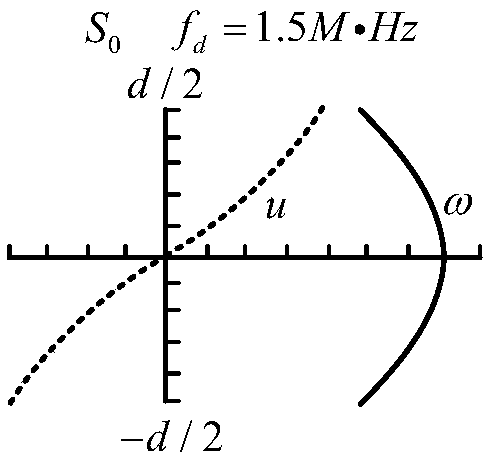Method for analyzing depth of crack of thin plate based on ultrasonic lamb waves and time-reversal theory
An ultrasonic Lamb wave and time reversal technology, used in the analysis of solids using sonic/ultrasonic/infrasonic waves, material analysis using sonic/ultrasonic/infrasonic waves, and material analysis, etc. Lamb waves cannot propagate and other problems, to achieve the effect of simple calculation method, improve detection ability and accuracy, achieve signal focusing and effective reconstruction
- Summary
- Abstract
- Description
- Claims
- Application Information
AI Technical Summary
Problems solved by technology
Method used
Image
Examples
Embodiment
[0084] In the embodiments of the present invention, the crack depth is analyzed by taking an aluminum thin plate as an example. First, the longitudinal position X of the crack can be obtained by detecting the product of the time required to receive the reflected wave and the propagation velocity 1 ; Secondly, the size P of the crack can be obtained through the reflection coefficient or transmission coefficient, and the thickness of the crack can be regarded as very thin. Again, the depth of the crack is represented by the distance L between the center of the crack and the mid-plane, such as Figure 5 shown. It should be noted that the depth of the crack is of vital reference value for the evaluation of the advantages and disadvantages of the plate and the evaluation of the cause of the crack, and from the analysis of mechanics, it can be known that if the crack is sustained near the plate surface The pressure will break more easily than the thin plate near the midplane.
[...
PUM
 Login to View More
Login to View More Abstract
Description
Claims
Application Information
 Login to View More
Login to View More - R&D
- Intellectual Property
- Life Sciences
- Materials
- Tech Scout
- Unparalleled Data Quality
- Higher Quality Content
- 60% Fewer Hallucinations
Browse by: Latest US Patents, China's latest patents, Technical Efficacy Thesaurus, Application Domain, Technology Topic, Popular Technical Reports.
© 2025 PatSnap. All rights reserved.Legal|Privacy policy|Modern Slavery Act Transparency Statement|Sitemap|About US| Contact US: help@patsnap.com



